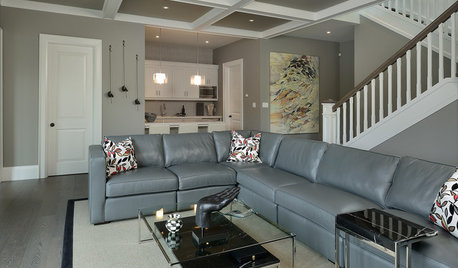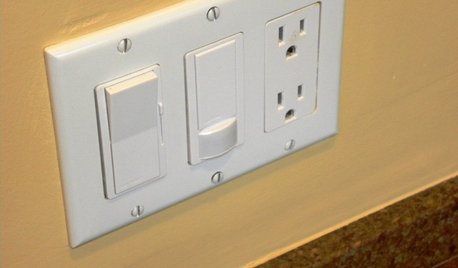Dimmable Compact Fluorescent (CFL) Review
buellwinkle
17 years ago
Related Stories

LIGHTINGWhat to Know About Switching to LED Lightbulbs
If you’ve been thinking about changing over to LEDs but aren't sure how to do it and which to buy, this story is for you
Full Story
COLORWant Gorgeous Interior Colors? Look to the Light
See how to manipulate natural and artificial light — and learn about those baffling new bulbs — to get the exact room colors you want
Full Story
LIGHTING5 Questions to Ask for the Best Room Lighting
Get your overhead, task and accent lighting right for decorative beauty, less eyestrain and a focus exactly where you want
Full Story
GREAT HOME PROJECTSHow to Install a Dimmer Switch
New project for a new year: Take control of your lighting to set the right mood for entertaining, dining and work
Full Story
LIGHTINGThe Lowdown on High-Efficiency LED Lighting
Learn about LED tapes, ropes, pucks and more to create a flexible and energy-efficient lighting design that looks great
Full Story
THE ART OF ARCHITECTUREDesign Workshop: Cool Lighting Tricks
We turn you on to pro lighting strategies to highlight features, create intrigue and make the most of indoor and outdoor rooms
Full Story


Chemocurl zn5b/6a Indiana
dadoes
Related Discussions
RP: Best compact fluorescent bulbs?
Q
dimmable cfl not ul approved for recessed cans?
Q
4 inch Cans & Dimmable CFL's
Q
compact fluorescent application?
Q
steve_o
eldemila
scryn
eldemila
joyfulguy
azzalea
steve_o
greatlakesmower
buellwinkleOriginal Author
wblynch
steve_o
buellwinkleOriginal Author
energymike
bud_wi
mikie_gw
joyfulguy
greg_h
bud_wi
trikincurt
sean_m
zendev
lexi7
busybee3
lexi7
cynic
lexi7
dadoes
busybee3
lexi7
joyfulguy
greg_h
lexi7
carmen_grower_2007
hersraterdave
mote
cynic
klaire2001
theycallmetak_gmail_com
dag16